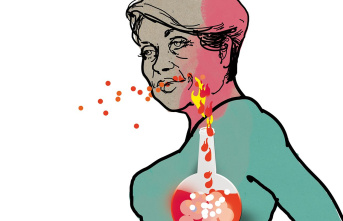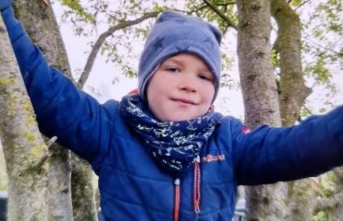A previously unnoticed virus and other factors could be behind a rise in unexplained hepatitis cases in young children worldwide. This is suggested independently by three studies in the journal "Nature". The return of children to daycare centers and schools after the corona lockdowns could also play a role.
At the beginning of April 2022, mysterious and sometimes severe cases of hepatitis - an inflammation of the liver - occurred in previously healthy children in whom no hepatitis viruses could be detected.
In July, the World Health Authority (WHO) reported a good 1,000 sick children in 35 countries, and no case from Germany was included in the corresponding list. Around 50 of the patients, some of whom were very young, required a liver transplant, and at least 22 died.
High levels of a virus detected in the blood
The studies that have now been published from Great Britain and the USA suggest a connection with the adeno-associated virus 2 (AAV2): The research groups led by the University of Glasgow, University College London and the University of California found it in blood and liver tissue samples from children partly high concentrations of the virus.
Until now, AAV2 was thought not to cause disease. In addition, AAV2 itself is not able to infect cells: it needs other viruses to multiply.
In fact, the team from University College London found small traces of a human adenovirus and a herpes virus in addition to AAV2, which could act as "helper viruses". The scientists suspect that these allow AAV2 to multiply and contribute to the severity of liver damage.
The researchers at the University of California also observed so-called co-infections in all sick children, in this case the Epstein-Barr virus or a herpes virus. "We were surprised by the fact that the infections we found in these children were not caused by an unusual emerging virus, but by common childhood viral pathogens," notes Charles Chiu, lead author of the US study, in a statement at.
"All three studies make the same observation of AAV2 in children with unexplained acute hepatitis," summarizes Frank Tacke from the Berlin Charité in an accompanying comment. The fact that the investigations were conducted on two continents makes them even more valuable given the global nature of the outbreak.
However, all investigations were carried out retrospectively and only included a relatively small number of cases and an even smaller number of available liver tissue samples. In order to uncover possible factors or co-factors for the development of the disease, more clinical information about the sick children is also necessary.
Follow-up studies are required
The authors of the studies themselves emphasize that their work would link AAV2 to the recent increase in unexplained hepatitis cases. However, it remains unclear what role the virus plays in the development of liver inflammation. According to Tacke, targeted and controlled follow-up examinations would be necessary here. He writes, "Direct evidence on how AAV2 might cause hepatitis is limited."
Genetic analyzes by the research group from Glasgow suggest that an abnormal immune reaction due to the corresponding hereditary factors could be the cause of hepatitis - and not a direct liver-damaging effect of AAV2.
The scientists found that 93 percent of the affected children were carriers of a gene variant that indicates a susceptibility to autoimmune diseases involving immune cells, the so-called T cells. The researchers from London also found evidence of an immune-mediated process when they compared liver samples from patients and healthy controls.
Possible connection with the corona virus
In his comment, however, Frank Tacke does not rule out the possibility that the corona virus could also be of importance: A direct involvement of SARS-CoV-2 cannot be ruled out, and an indirect effect is also conceivable. The hepatitis wave in spring 2022 came with the easing of the COVID-19 measures around the world.
"The timing of the outbreak could be explained by the fact that children were suddenly exposed to a flood of viruses after the closures, or had poorly developed immune systems, leading to increased susceptibility to otherwise harmless viruses."
A suspicion shared by Charles Chiu, lead author of the US study: "It could be an unintended consequence of what we have experienced in the last two to three years of the pandemic." In the meantime, the incidence of acute severe hepatitis in children has decreased. The best way to continue protecting them from this is to wash their hands frequently and keep them at home when they are sick.











